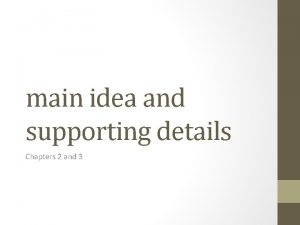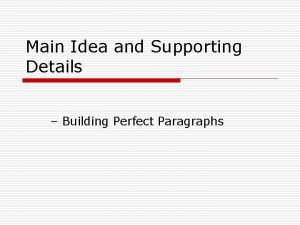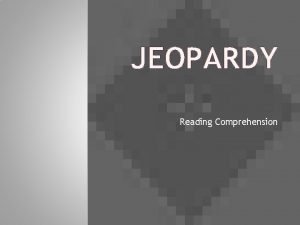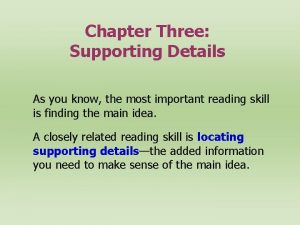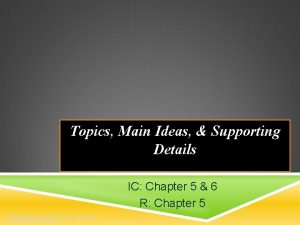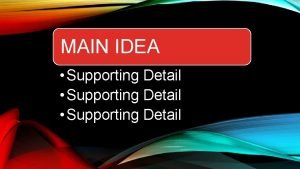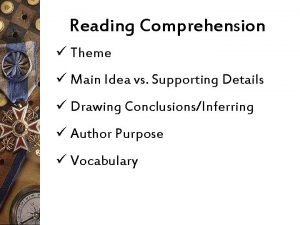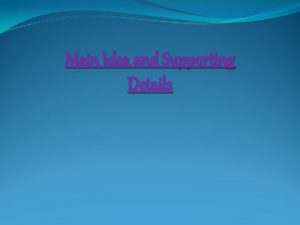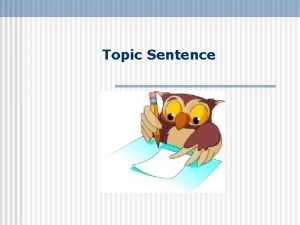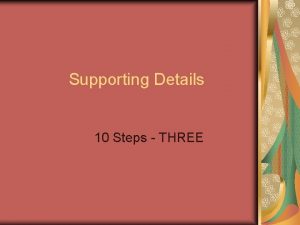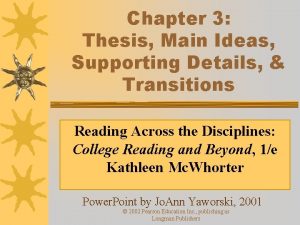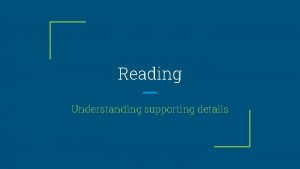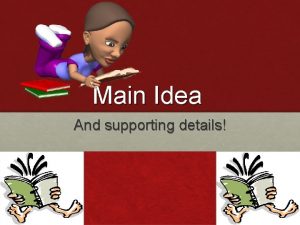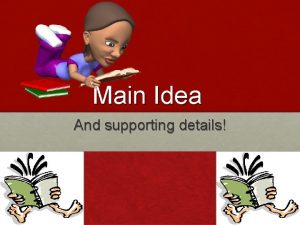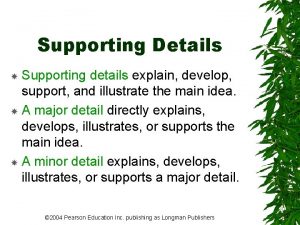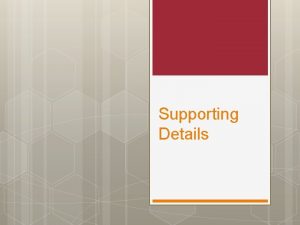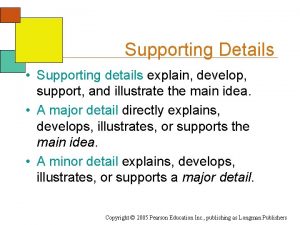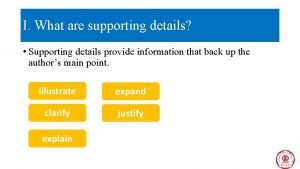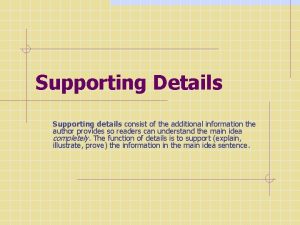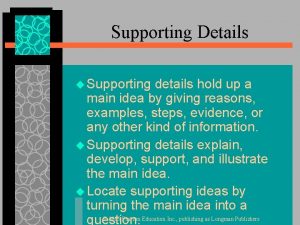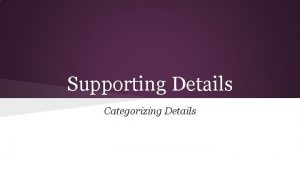Chapter 3 Thesis Main Ideas Supporting Details Transitions














- Slides: 14

Chapter 3: Thesis, Main Ideas, Supporting Details, & Transitions Reading Across the Disciplines: College Reading and Beyond, 3/e Kathleen Mc. Whorter © 2006 Pearson Education Inc. , publishing as Longman Publishers

In this chapter you will learn how to: ¬Identify thesis of a reading assignment. ¬Distinguish main ideas and supporting details. ¬Recognize transitions that writers use to link ideas together. © 2006 Pearson Education Inc. , publishing as Longman Publishers

Identifying the Thesis The thesis is what the entire reading selection is about; it is the one most important idea that the entire article is written to explain. © 2006 Pearson Education Inc. , publishing as Longman Publishers

Main Ideas A paragraph is a group of related sentences that express a single idea about a single topic—the main idea. Main Idea ¬ Detail – Detail ¬ Detail © 2006 Pearson Education Inc. , publishing as Longman Publishers – Detail

The Topic Sentence The topic sentence is the one sentence that expresses the main idea. © 2006 Pearson Education Inc. , publishing as Longman Publishers

The Topic Sentence First The author first states his or her main point and then explains it. Main Point Detail Most common © 2006 Pearson Education Inc. , publishing as Longman Publishers

Topic Sentence Last The author leads up to the main point and then directly states it at the end. Detail Main Point © 2006 Pearson Education Inc. , publishing as Longman Publishers

Topic Sentence in the Middle Some details lead up to or introduce the main idea while others follow the main idea to further explain or describe it. Detail Main Point Detail © 2006 Pearson Education Inc. , publishing as Longman Publishers

Topic Sentence First & Last Writers may emphasize an important idea at the beginning and then again at the end. Or, the first and last sentence together express the paragraph’s main point. Main Point Detail Main Point © 2006 Pearson Education Inc. , publishing as Longman Publishers

Finding the Implied Main Idea ¬Identify the topic. ¬Decide what the author wants you to know about the topic (main idea) and look at the supporting details. ¬Express this idea in your own words. © 2006 Pearson Education Inc. , publishing as Longman Publishers

Recognizing Supporting Details ¬Supporting details are those facts and ideas that prove or explain the main idea of a paragraph. – Identify the main idea. – List supporting points for the main idea. © 2006 Pearson Education Inc. , publishing as Longman Publishers

Recognizing Transitions are linking words or phrases used to lead the reader from one idea to another. © 2006 Pearson Education Inc. , publishing as Longman Publishers

Common Transitions ¬Time-Sequence—first, later, next ¬Example—for instance, such as ¬Enumeration —first, second, next ¬Continuation—also, in addition ¬Contrast—however, in contrast ¬Comparison—similarly, like ¬Cause-Effect—because, therefore © 2006 Pearson Education Inc. , publishing as Longman Publishers

Visit the Companion Website http: //www. ablongman. com/mcwhorter © 2006 Pearson Education Inc. , publishing as Longman Publishers
 Main idea topic sentence and supporting details
Main idea topic sentence and supporting details Main idea and supporting details
Main idea and supporting details Supporting details
Supporting details Main idea and supporting details examples
Main idea and supporting details examples Main idea and details jeopardy
Main idea and details jeopardy Main idea and supporting details examples
Main idea and supporting details examples Topic, main idea and supporting details examples
Topic, main idea and supporting details examples Major minor details
Major minor details Supporting detail 1
Supporting detail 1 Whats supporting details
Whats supporting details Theme vs topic
Theme vs topic Main idea and supporting details
Main idea and supporting details Main idea examples
Main idea examples Completing sentence example
Completing sentence example Example of main idea and supporting details
Example of main idea and supporting details


